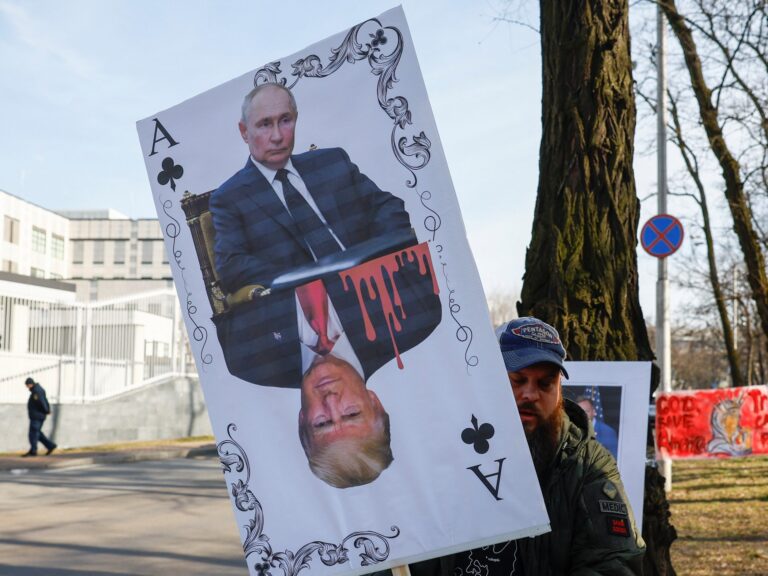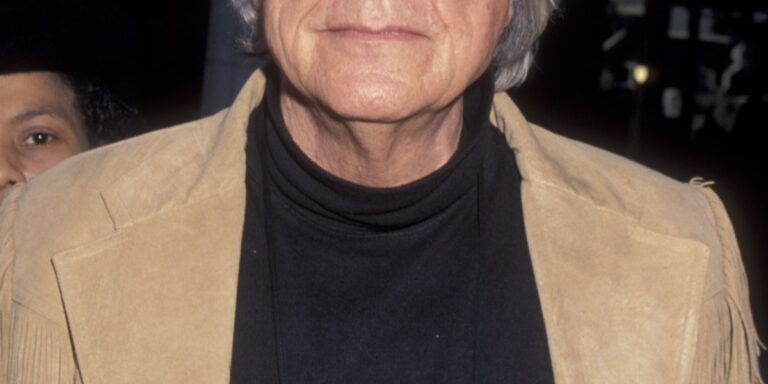United States President Donald Trump and his Russian counterpart Vladimir Putin are set to meet in Anchorage, Alaska, on Friday in a bid to try and end Russia’s three-year assault on Ukraine.
In the run-up to the meeting, Trump said that he believes Putin is ready to agree to a ceasefire. But his suggestion that Putin and Ukrainian President Volodymyr Zelenskyy could “divvy things up” has alarmed observers in Kyiv.
For their part, remarks from top Russian officials suggest that Moscow has tried to water down discussions about the war by linking them with other bilateral issues, particularly restoring economic ties with the US.
On Thursday, Putin sat down with top officials at the Kremlin to discuss the Alaska meeting. He said that he believed the US was making “sincere efforts to stop the fighting, end the crisis and reach agreements of interest to all parties involved in this conflict”.
Earlier on Thursday, Yuri Ushakov, one of Putin’s top foreign policy aides, told reporters about Russia’s preparations for the talks. He said it was “obvious to everyone that the central topic will be the settlement of the Ukraine crisis”.
“An exchange of views is expected on the further development of bilateral cooperation, including in the trade and economic sphere,” he said, pointing out that: “I would like to note that this cooperation has a huge and, unfortunately, untapped potential.”
Ushakov also announced that in addition to Russia’s Foreign Minister Sergey Lavrov, Russia’s delegation in Alaska would also include the country’s finance minister, Anton Siluanov, and Kirill Dmitriev, Putin’s envoy on foreign investment and economic cooperation.
The inclusion of Siluanov and Dmitriev is another sign that the Kremlin hoped to discuss economic matters at the summit.
What does Russia-US trade look like?
In 2021, before Russia’s full-fledged invasion of Ukraine, total trade between Russia and the US amounted to $36.1bn. This included $6.4bn in US exports to Russia, and $29.7bn in US imports from Russia – amounting to a US trade deficit of $23.3bn.
For context, Russia was America’s 30th largest trade partner in 2021. Since then, after numerous rounds of American sanctions, trade between Russia and the US has fallen roughly 90 percent.
Incidentally, Russia’s overall trade balance – leaving the US – declined significantly following its decision to invade Ukraine. From 2022 to 2023, its international balance of payments fell by a whopping 70 percent, to just $86.3bn.
But back in 2021, Russia’s trade surplus with the US was concentrated almost exclusively in commodities. Oil, minerals and base metals like iron and steel made up roughly 75 percent of Russia’s exports. Meanwhile, US exports to Russia were concentrated in manufactured goods.
Were Russian exports to the US vital?
The short answer is no.
By the time Russia invaded Ukraine in February 2022, the US – whose energy sector was transformed by hydraulic fracturing and horizontal drilling in the early 2000s – was already the world’s largest oil producer, at 11.9 million barrels of oil per day.
One area where Russia did hold limited significance was in certain types of energy products. Russia supplied certain grades of crude oil – notably Urals – as well as refined products like vacuum gas oil (VGO), residual fuel oil and naphtha.
Russian VGO was especially important for making gasoline and diesel products in US refineries, which lacked enough domestic feedstock with the optimal chemical and physical properties.
Elsewhere, the US continues to import limited quantities of uranium hexafluoride, a chemical important in uranium processing, from Russia. Some US utility companies still have supply contracts with Russia, which accounted for about one-third of America’s enriched uranium needs when war broke out.
As with energy products, however, American firms exposed to Russian uranium supplies have readjusted their supply chains in response to sanctions. What’s more, US companies like X-energy and Orano have invested heavily in domestic production in recent years.
Does Russia have any other leverage?
In the wake of sanctions after February 2022, most Russian commodity shipments were rerouted from Western countries to China at discounted prices, including for energy products and uranium.
Indeed, trade between China and Russia has grown in parallel with sanctions on Russia. A common border, shared geopolitical perspectives and joint opposition to the US have deepened bilateral relations.
Russia-China trade saw annual growth of nearly 30 percent in both 2022 and 2023, when it hit $240.1bn, according to the Centre for European Policy Analysis. In 2024, Russia climbed to 7th place among China’s trading partners, up from 13th place in 2020.
During that time, China has supplied Russia with more high-end products – like advanced electronics and industrial machinery – while Moscow has solidified its position as a top supplier of oil and gas to Beijing.
What’s more, the two countries conduct regular naval exercises and strategic bomber patrols together. The US has consistently expressed concerns over joint military drills and views the China-Russia alignment as a threat to its global leadership role.
Putin will be aware of these dynamics heading into Friday’s meeting.
What else could Putin offer Trump?
In March, Putin’s investment envoy – Kirill Dmitriev – claimed that Russia and the US had started talks on rare earth metals projects in Russia, and that some American companies had already expressed an interest in them.
“Rare earth metals are an important area for cooperation, and, of course, we have begun discussions on various rare earth metals and (other) projects in Russia,” Dmitriev told the Izvestia newspaper.
China’s almost total global control over the production of critical minerals – used in everything from defence equipment to consumer electronics – has focused Washington’s attention on developing its own supplies.
The US Geological Survey estimates Russia’s reserves of rare earth metals at 3.8 million tonnes, but Moscow has far higher estimates.
According to the Natural Resources Ministry, Russia has reserves of 15 rare earth metals totalling 28.7 million tonnes, as of January 2023.
But even accounting for the margin of error hanging over Russia’s potential rare earth supplies, it would still only account for a tiny fraction of global stockpiles.
As such, the US has been pursuing minerals-for-security deals with the Democratic Republic of the Congo and Ukraine in recent months, in an effort to wrestle control of the global supply chain away from China.
It may try and do the same with Russia.
What does Russia want from these meetings?
Since Russia invaded Ukraine in 2022, Western countries have imposed 21,692 sanctions on Russia, mostly against individuals.
Key sanctions on Moscow include import bans on Russian oil, a price cap on Russian fuel, and the freezing of Russian central bank assets held in European financial institutions.
But on July 14, Trump threatened to impose so-called secondary sanctions, that if carried out, would mark a notable shift.
Since then, he has targeted India – the second biggest buyer of Russian oil – by doubling a 25 percent tariff on its goods to 50 percent, as a penalty for that trade with Moscow. So far, Trump has not imposed similar secondary tariffs on China, the largest consumer of Russian oil.
But he has suggested that Beijing could face such tariffs in the future, as the US tries to pressure countries to stop buying Russian crude, and thereby corner Putin into accepting a ceasefire.
Members of Trump’s administration have also indicated that if the Trump-Putin talks in Alaska don’t go well, the tariffs on India could be increased further.
Meanwhile, lawmakers from both US political parties are pushing for a bill – the Sanctioning Russia Act of 2025 – that would also target countries buying Russian oil and gas.
The bill would give Trump the authority to impose 500 percent tariffs on any country that helps Russia. US senators are reportedly waiting on Trump’s OK to move the bill forward.
In Alaska, Putin is expected to demand that Western sanctions on Russia be eased in exchange for Moscow agreeing to any peace deal.


















